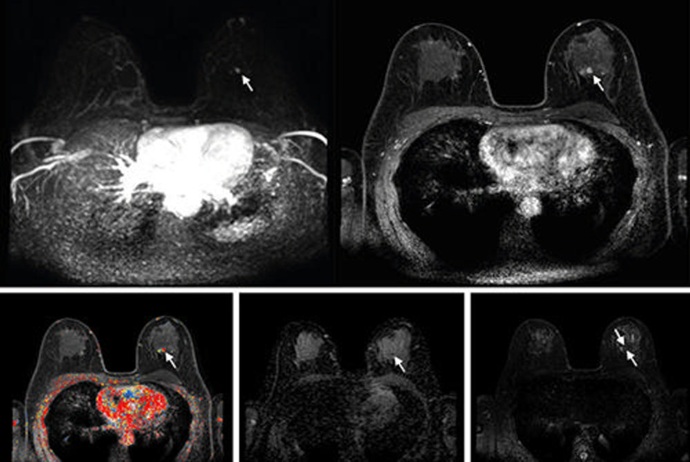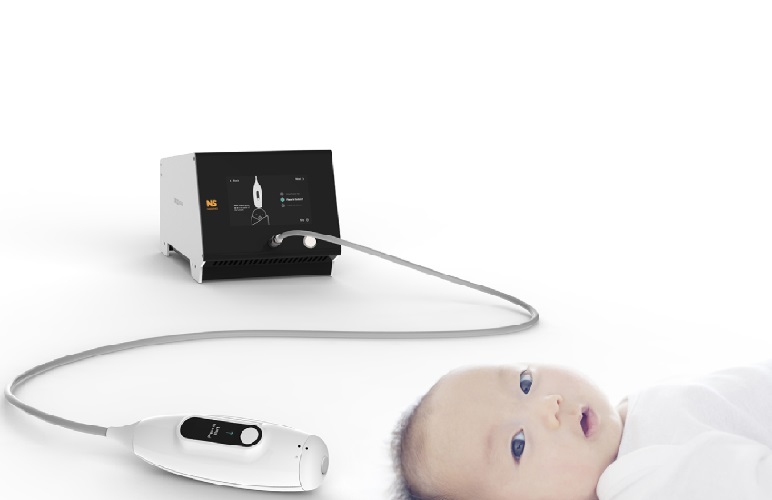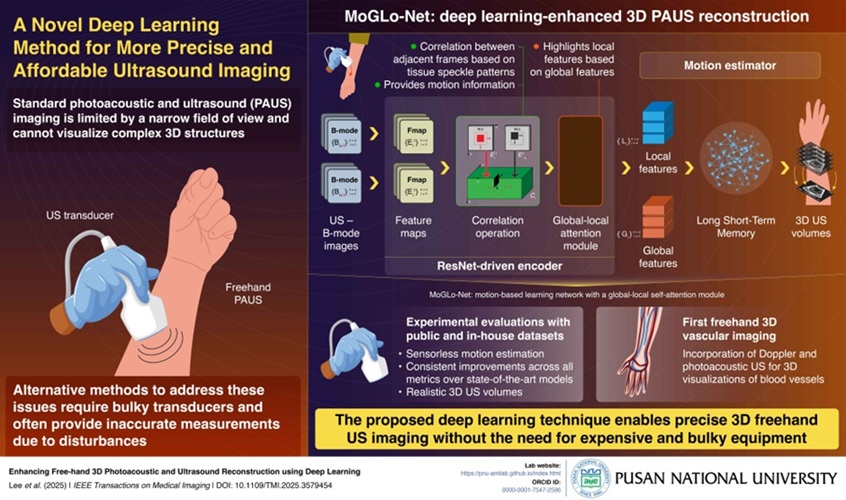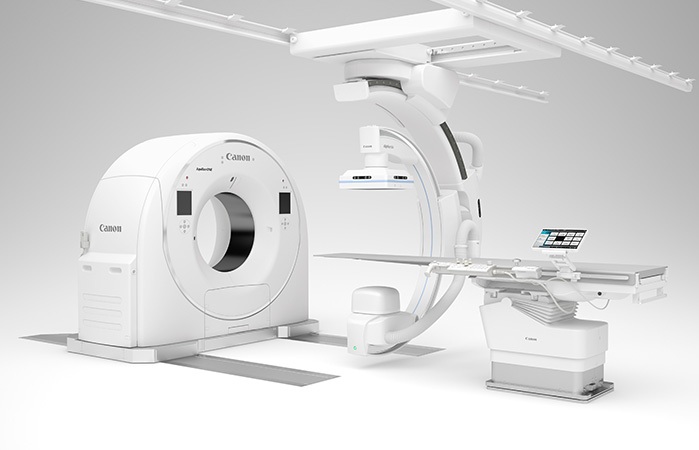Low-Dose Lung Radiographs Facilitate Corona Diagnosis
|
By MedImaging International staff writers Posted on 18 May 2020 |

Image: Schematic of a device for x-ray dark field imaging (Photo courtesy of TUM)
An innovative x-ray method that involves significantly lower radiation than computed tomography (CT) can help identify COVID-19 abnormalities.
Developed at Munich Technical University (TUM; Germany), dark-field imaging visualizes x-ray scattering. While conventional x-ray imaging shows the attenuation of x-rays on their way through tissue, the dark-field method focuses on the small share of the x-ray light which is scattered, similar to long-established dark-field microscopy technologies using visible light. To do so, x-ray dark-field imaging uses gratings as optical elements; the gratings are arrangements of fine lines which alternate between different degrees of x-ray transparency.
A total of three gratings used. Because of the short wavelength of the x-rays, the lines of the gratings are only a few micrometers (thousandths of a millimeter) wide. The patient is located between the second and third grating. The x-ray detector receives a conventional x-ray image which is overlaid with a pattern of fringes. The fringe pattern is the weakest in the areas where regions with intact alveoli are visualized. Specialized software then reconstructs two separate images, a conventional x-ray image and a dark-field image in which areas with intact alveoli appear bright, and areas with damaged alveoli appear dark.
“In pneumonia of the type caused by Covid-19, structures form in the lung which initially resemble cotton wadding or spider webs, and which then spread throughout the lung and fill with fluid. The changes in the lung are associated with damage to the alveoli which could be clearly visible in dark-field images,” said Professor Franz Pfeiffer, PhD. “The scattering is particularly strong at interfaces between air and tissue. As a result, a dark-field image of the lung can clearly distinguish areas with alveoli that are intact, i.e. filled with air, from regions in which the alveoli have collapsed or are filled with fluid.”
X-ray methods can be used to identify pathological changes in the lung that can typically accompany Covid-19, but the changes caused cannot be clearly identified in a conventional two-dimensional x-ray image, and require CT. Dark-field technology would involve exposure to a significantly lower radiation dose, as it requires only a single image per patient, while CT requires a large number of individual images taken from various angles. It would also make it possible to examine large numbers of patients within a very short time, providing results immediately after the examination.
Related Links:
Munich Technical University
Developed at Munich Technical University (TUM; Germany), dark-field imaging visualizes x-ray scattering. While conventional x-ray imaging shows the attenuation of x-rays on their way through tissue, the dark-field method focuses on the small share of the x-ray light which is scattered, similar to long-established dark-field microscopy technologies using visible light. To do so, x-ray dark-field imaging uses gratings as optical elements; the gratings are arrangements of fine lines which alternate between different degrees of x-ray transparency.
A total of three gratings used. Because of the short wavelength of the x-rays, the lines of the gratings are only a few micrometers (thousandths of a millimeter) wide. The patient is located between the second and third grating. The x-ray detector receives a conventional x-ray image which is overlaid with a pattern of fringes. The fringe pattern is the weakest in the areas where regions with intact alveoli are visualized. Specialized software then reconstructs two separate images, a conventional x-ray image and a dark-field image in which areas with intact alveoli appear bright, and areas with damaged alveoli appear dark.
“In pneumonia of the type caused by Covid-19, structures form in the lung which initially resemble cotton wadding or spider webs, and which then spread throughout the lung and fill with fluid. The changes in the lung are associated with damage to the alveoli which could be clearly visible in dark-field images,” said Professor Franz Pfeiffer, PhD. “The scattering is particularly strong at interfaces between air and tissue. As a result, a dark-field image of the lung can clearly distinguish areas with alveoli that are intact, i.e. filled with air, from regions in which the alveoli have collapsed or are filled with fluid.”
X-ray methods can be used to identify pathological changes in the lung that can typically accompany Covid-19, but the changes caused cannot be clearly identified in a conventional two-dimensional x-ray image, and require CT. Dark-field technology would involve exposure to a significantly lower radiation dose, as it requires only a single image per patient, while CT requires a large number of individual images taken from various angles. It would also make it possible to examine large numbers of patients within a very short time, providing results immediately after the examination.
Related Links:
Munich Technical University
Latest Radiography News
- AI Generates Future Knee X-Rays to Predict Osteoarthritis Progression Risk
- AI Algorithm Uses Mammograms to Accurately Predict Cardiovascular Risk in Women
- AI Hybrid Strategy Improves Mammogram Interpretation
- AI Technology Predicts Personalized Five-Year Risk of Developing Breast Cancer
- RSNA AI Challenge Models Can Independently Interpret Mammograms
- New Technique Combines X-Ray Imaging and Radar for Safer Cancer Diagnosis
- New AI Tool Helps Doctors Read Chest X‑Rays Better
- Wearable X-Ray Imaging Detecting Fabric to Provide On-The-Go Diagnostic Scanning
- AI Helps Radiologists Spot More Lesions in Mammograms
- AI Detects Fatty Liver Disease from Chest X-Rays
- AI Detects Hidden Heart Disease in Existing CT Chest Scans
- Ultra-Lightweight AI Model Runs Without GPU to Break Barriers in Lung Cancer Diagnosis
- AI Radiology Tool Identifies Life-Threatening Conditions in Milliseconds

- Machine Learning Algorithm Identifies Cardiovascular Risk from Routine Bone Density Scans
- AI Improves Early Detection of Interval Breast Cancers
- World's Largest Class Single Crystal Diamond Radiation Detector Opens New Possibilities for Diagnostic Imaging
Channels
MRI
view channel
AI-Assisted Model Enhances MRI Heart Scans
A cardiac MRI can reveal critical information about the heart’s function and any abnormalities, but traditional scans take 30 to 90 minutes and often suffer from poor image quality due to patient movement.... Read more
AI Model Outperforms Doctors at Identifying Patients Most At-Risk of Cardiac Arrest
Hypertrophic cardiomyopathy is one of the most common inherited heart conditions and a leading cause of sudden cardiac death in young individuals and athletes. While many patients live normal lives, some... Read moreUltrasound
view channel
Ultrasound Probe Images Entire Organ in 4D
Disorders of blood microcirculation can have devastating effects, contributing to heart failure, kidney failure, and chronic diseases. However, existing imaging technologies cannot visualize the full network... Read more
Disposable Ultrasound Patch Performs Better Than Existing Devices
Wearable ultrasound devices are widely used in diagnostics, rehabilitation monitoring, and telemedicine, yet most existing models rely on lead-based piezoelectric ceramics that pose health and environmental risks.... Read moreNuclear Medicine
view channel
New Imaging Solution Improves Survival for Patients with Recurring Prostate Cancer
Detecting recurrent prostate cancer remains one of the most difficult challenges in oncology, as standard imaging methods such as bone scans and CT scans often fail to accurately locate small or early-stage tumors.... Read more
PET Tracer Enables Same-Day Imaging of Triple-Negative Breast and Urothelial Cancers
Triple-negative breast cancer (TNBC) and urothelial bladder carcinoma (UBC) are aggressive cancers often diagnosed at advanced stages, leaving limited time for effective treatment decisions.... Read more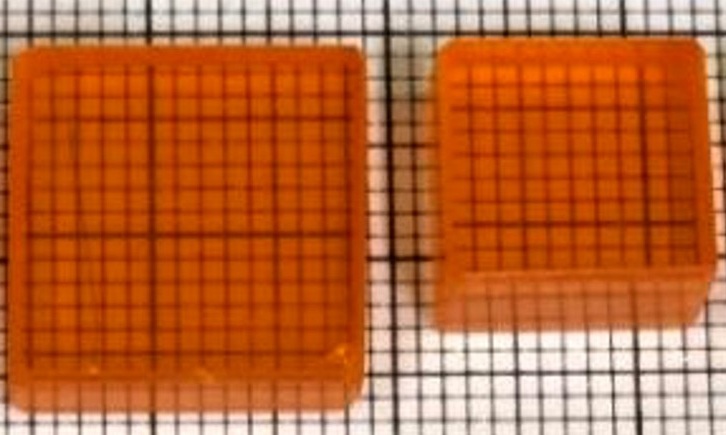
New Camera Sees Inside Human Body for Enhanced Scanning and Diagnosis
Nuclear medicine scans like single-photon emission computed tomography (SPECT) allow doctors to observe heart function, track blood flow, and detect hidden diseases. However, current detectors are either... Read more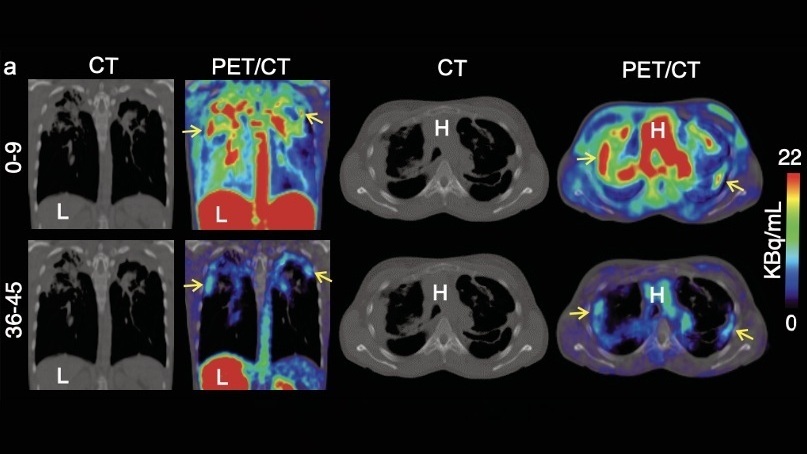
Novel Bacteria-Specific PET Imaging Approach Detects Hard-To-Diagnose Lung Infections
Mycobacteroides abscessus is a rapidly growing mycobacteria that primarily affects immunocompromised patients and those with underlying lung diseases, such as cystic fibrosis or chronic obstructive pulmonary... Read moreGeneral/Advanced Imaging
view channel
New Ultrasmall, Light-Sensitive Nanoparticles Could Serve as Contrast Agents
Medical imaging technologies face ongoing challenges in capturing accurate, detailed views of internal processes, especially in conditions like cancer, where tracking disease development and treatment... Read more
AI Algorithm Accurately Predicts Pancreatic Cancer Metastasis Using Routine CT Images
In pancreatic cancer, detecting whether the disease has spread to other organs is critical for determining whether surgery is appropriate. If metastasis is present, surgery is not recommended, yet current... Read moreImaging IT
view channel
New Google Cloud Medical Imaging Suite Makes Imaging Healthcare Data More Accessible
Medical imaging is a critical tool used to diagnose patients, and there are billions of medical images scanned globally each year. Imaging data accounts for about 90% of all healthcare data1 and, until... Read more
Global AI in Medical Diagnostics Market to Be Driven by Demand for Image Recognition in Radiology
The global artificial intelligence (AI) in medical diagnostics market is expanding with early disease detection being one of its key applications and image recognition becoming a compelling consumer proposition... Read moreIndustry News
view channel
GE HealthCare and NVIDIA Collaboration to Reimagine Diagnostic Imaging
GE HealthCare (Chicago, IL, USA) has entered into a collaboration with NVIDIA (Santa Clara, CA, USA), expanding the existing relationship between the two companies to focus on pioneering innovation in... Read more
Patient-Specific 3D-Printed Phantoms Transform CT Imaging
New research has highlighted how anatomically precise, patient-specific 3D-printed phantoms are proving to be scalable, cost-effective, and efficient tools in the development of new CT scan algorithms... Read more
Siemens and Sectra Collaborate on Enhancing Radiology Workflows
Siemens Healthineers (Forchheim, Germany) and Sectra (Linköping, Sweden) have entered into a collaboration aimed at enhancing radiologists' diagnostic capabilities and, in turn, improving patient care... Read more













